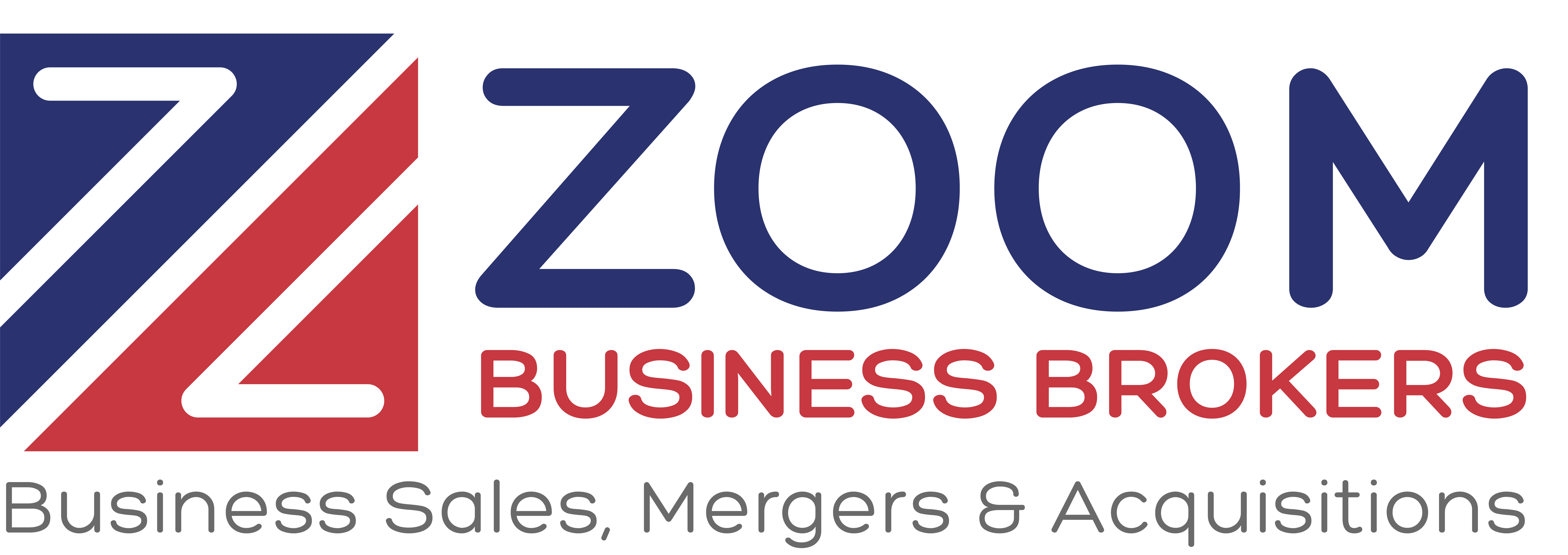
The Power of Growth Rate: Differentiating Value in Similar Businesses

In the world of business, it’s not uncommon to come across two companies in nearly identical industries, each boasting similar EBITDA figures. However, their valuations can differ significantly. Let’s consider two hypothetical companies, both with an EBITDA of $6 million, yet one is valued at $30 million (5x EBITDA) while the other fetches a price tag of $42 million (7x EBITDA). The question that arises here is, why such a stark difference in their valuations?
The discrepancy in valuations might tempt one to turn to the typical factors, such as:
- The Market
- Management/Employees
- Uniqueness/Proprietary
- Systems/Controls
- Revenue Size
- Profitability
- Regional/Global Distribution
- Capital Equipment Requirements
- Intangibles (brand/patents/etc.)
While all these factors play a role in the valuation of a company, one key element sits at the end of the checklist that plays an oversized role: the Growth Rate. This value driver is paramount and often becomes the key consideration for prospective buyers when evaluating a business’s worth.
Let’s delve into our hypothetical scenario a bit deeper. The company valued at 7x EBITDA boasts a remarkable growth rate of 50 percent, while its counterpart, valued at 5x EBITDA, shows a modest growth rate of 12 percent. This difference in growth rate can be a game-changer, significantly impacting the valuation multiples.
However, to comprehend the real growth narrative, it’s crucial to address certain pertinent questions:
- Are the company’s growth projections credible?
- Where is the growth originating from?
- What products or services are driving the growth?
- Where and why are customers supporting the projected growth coming from?
- Are there long-term contracts in place?
- How reliable are these contracts or orders?
These questions help buyers and sellers alike to unravel the true story behind a company’s growth rate, allowing them to evaluate the potential for future expansion. It’s not just about the current growth rate but also the sustainability and quality of this growth.
For instance, growth propelled by a diverse customer base, innovative products, or services, and a strong market position can be more sustainable and thus more valuable. On the other hand, growth reliant on a few major contracts or a limited customer segment might entail more risk, potentially reducing the company’s valuation.
Moreover, the credibility of growth projections is also paramount. Buyers tend to prefer businesses with reliable, well-documented growth projections backed by robust strategic plans.
To conclude, while many factors contribute to a company’s value, the growth rate often holds the key to unlocking its true worth. It is not the sole determinant but often becomes a decisive factor differentiating two similar companies. Understanding this can enable businesses to plan better, optimize their growth strategies, and maximize their value in the marketplace. So remember, when it comes to business valuation, the growth rate often dictates the tale of the tape!
Read More
What Are Buyers Looking for in a Company?
It has often been said that valuing companies is an art, not a science. When a buyer considers the purchase of a company, three main things are almost always considered when arriving at an offering price.
Quality of the Earnings
Some accountants and intermediaries are very aggressive when adding back, for example, what might be considered one-time or non-recurring expenses. A non-recurring expense could be:
- meeting some new governmental guidelines,
- paying for a major lawsuit, or
- adding a new roof on the factory.
The argument is made that a non-recurring expense is a one-time drain on the “real” earnings of the company. Unfortunately, a non-recurring expense is almost an oxymoron. Almost every business has a non-recurring expense every year. By adding back these one-time expenses, the accountant or business appraiser is not allowing for the extraordinary expense (or expenses) that come up almost every year. These add-backs can inflate the earnings, resulting in a failure to reflect the real earning power of the business.
Sustainability of Earnings
The new owner is concerned that the business will sustain the earnings after the acquisition. In other words, the acquirer doesn’t want to buy the business if it is at the height of its earning power; or if the last few years of earnings have reflected a one-time contract, etc. Will the business continue to grow at the same rate it has in the past?
Verification of Information
Is the information provided by the selling company accurate, timely, and is all of it being made available? A buyer wants to make sure that there are no skeletons in the closet. How about potential litigation, environmental issues, product returns or uncollectible receivables? The above areas, if handled professionally and communicated accurately, can greatly assist in creating a favorable impression. In addition, they may also lead to a higher price and a quicker closing.
© Copyright 2015 Business Brokerage Press, Inc.
Photo Credit: mconnors via morgueFile
Read More
A Reasonable Price for Private Companies
Putting a price on privately-held companies is more complicated than placing a value or price on a publicly-held one. For one thing, many privately-held businesses do not have audited financial statements; these statements are very expensive and not required. Public companies also have to reveal a lot more about their financial issues and other information than the privately-held ones. This makes digging out information for a privately-held company difficult for a prospective purchaser. So, a seller should gather as much information as possible, and have their accountant put the numbers in a usable format if they are not already.
Another expert has said that when the seller of a privately-held company decides to sell, there are four estimates of price or value:
- A value placed on the company by an outside appraiser or expert. This can be either formal or informal.
- The seller’s “wish price.” This is the price the seller would really like to receive – best case scenario.
- The “go-to-market price” or the actual asking price.
- And, last but not least, the “won’t accept less than this price” set by the seller.
The selling price is usually somewhere between the asking price and the bottom-dollar price set by the seller. However, sometimes it is less than all four estimates mentioned above. The ultimate selling price is set by the marketplace, which is usually governed by how badly the seller wants to sell and how badly the buyer wants to buy.
What can a buyer review in assessing the price he or she is willing to pay? The seller should have answers available for all of the pertinent items on the following checklist. The more favorable each item is, the higher the price.
- Stability of Market
- Stability of Historical Earnings
- Cost Savings Post-Purchase
- Minimal Capital Expenditures Required
- Minimal Competitive Threats
- Minimal Alternative Technologies
- Reasonable Market
- Large Market Potential
- Reasonable Existing Market Position
- Solid Distribution Network
- Buyer/Seller Synergy
- Owner or Top Management Willing to Remain
- Product Diversity
- Broad Customer Base
- Non-dependency on Few Suppliers
There may be some additional factors to consider, but this is the type of analysis a buyer should perform. The better the answers to the above benchmarks, the more likely it is that a seller will receive a price between the market value and the “wish” price.
© Copyright 2015 Business Brokerage Press, Inc.
Photo Credit: cohdra via morgueFile
Read More
Top Ten Mistakes Made By Sellers
- Neglecting the day-to-day running of their business with the reasoning that it will sell tomorrow.
- Starting off with too high a price with the assumption the price can always be reduced.
- Assuming that confidentiality is a given.
- Failing to plan ahead to sell / deciding to sell impulsively.
- Expecting that the buyers will only want to see last year’s P&L.
- Negotiating with only one buyer at a time and letting any other potential buyers wait their turn.
- Having to reduce the price because the sellers want to retire and are not willing to stay with the acquirer for any length of time.
- Not accepting that the structure of the deal is as important as the price.
- Trying to win every point of contention.
- Dragging out the deal and not accepting that time is of the essence.
© Copyright 2015 Business Brokerage Press, Inc.
Photo Credit: jppi via morgueFile
Read MoreWhy Sell Your Company?
Selling one’s business can be a traumatic and emotional event. In fact, “seller’s remorse” is one of the major reasons that deals don’t close. The business may have been in the family for generations. The owner may have built it from scratch or bought it and made it very successful. However, there are times when selling is the best course to take. Here are a few of them.
- Burnout – This is a major reason, according to industry experts, why owners consider selling their business. The long hours and 7-day workweeks can take their toll. In other cases, the business may just become boring – the challenge gone. Losing interest in one’s business usually indicates that it is time to sell.
- No one to take over – Sons and daughters can be disenchanted with the family business by the time it’s their turn to take over. Family members often wish to move on to their own lives and careers.
- Personal problems – Events such as illness, divorce, and partnership issues do occur and many times force the sale of a company. Unfortunately, one cannot predict such events, and too many times, a forced sale does not bring maximum value. Proper planning and documentation can preclude an emergency sale.
- Cashing-out – Many company owners have much of their personal net worth invested in their business. This can present a lack of liquidity. Other than borrowing against the assets of the business, an owner’s only option is to sell it. They have spent years building, and now it’s time to cash-in.
- Outside pressure – Successful businesses create competition. It may be building to the point where it is easier to join it, than to fight it. A business may be standing still, while larger companies are moving in.
- An offer from “out of the blue” – The business may not even be on the market, but someone or some other company may see an opportunity. An owner answers the telephone and the voice on the other end says, “We would like to buy your company.”
There are obviously many other reasons why businesses are sold. The paramount issue is that they should not be placed on the market if the owner or principals are not convinced it’s time. And consider an old law that says, “The time to prepare to sell is the day you start or take over the business.”
